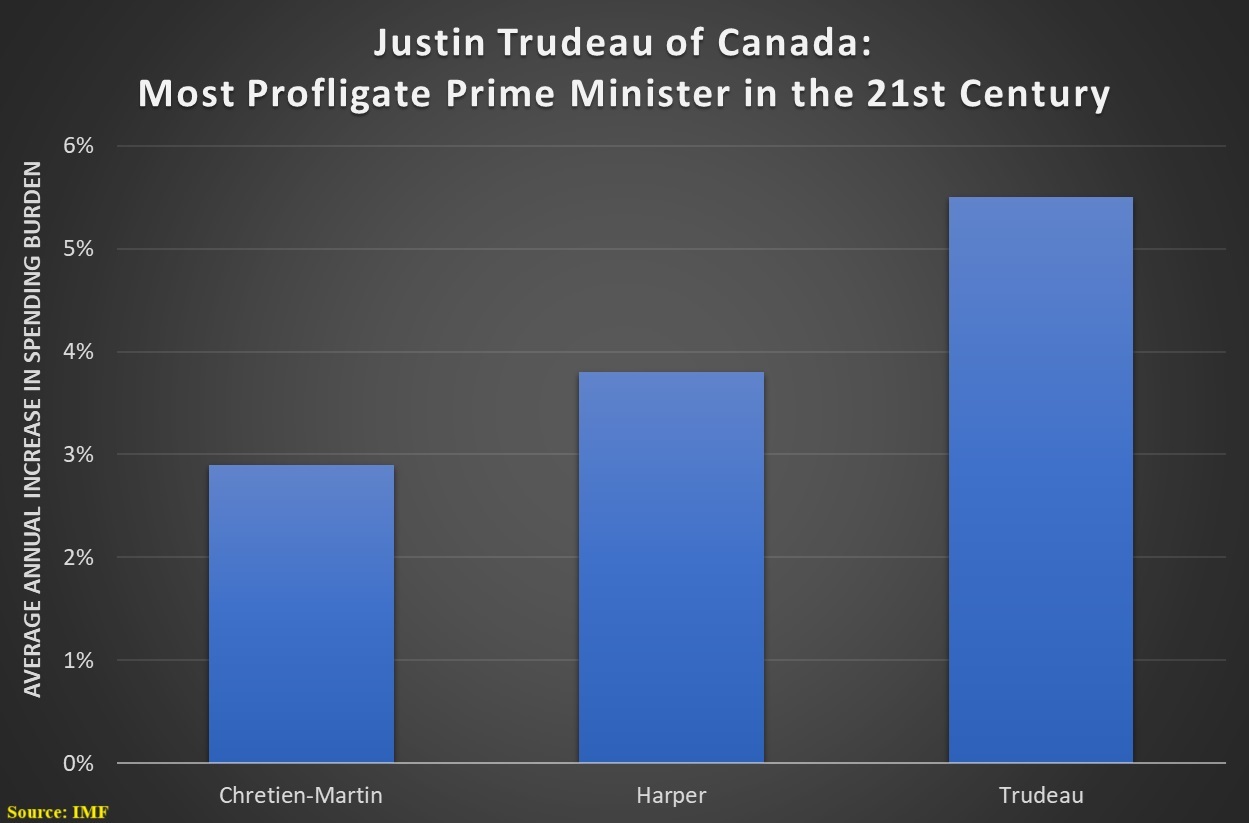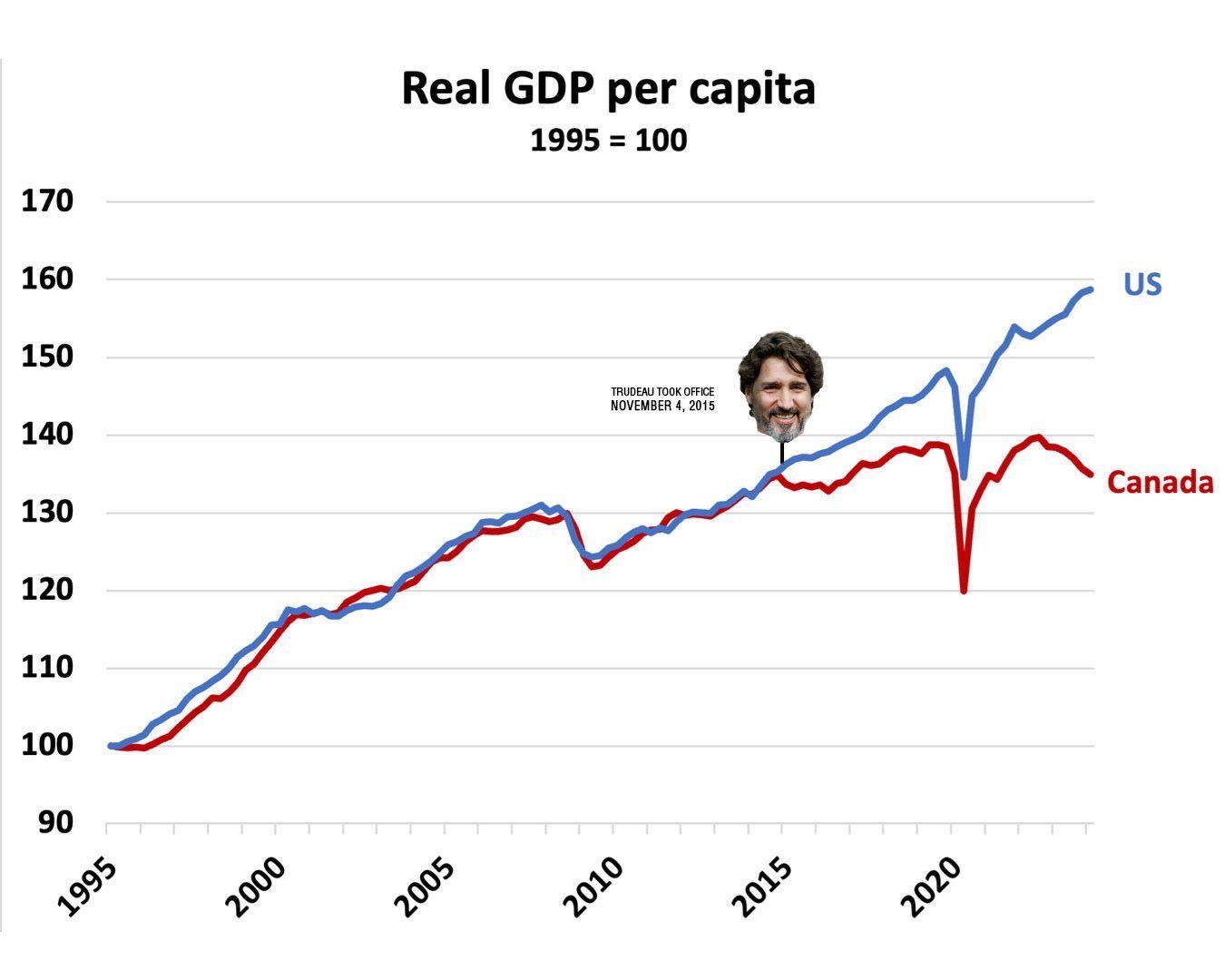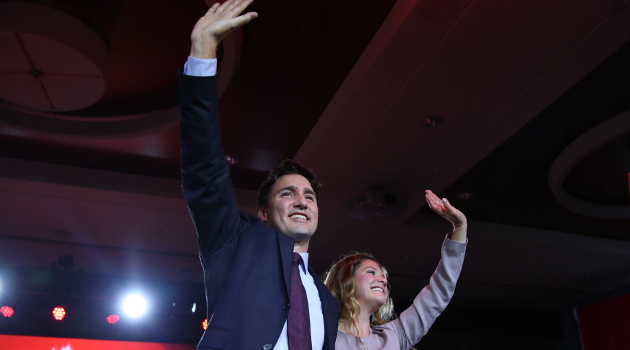Canadian politicians have often taken a wise approach to public policy (such as school choice, welfare reform, corporate tax reform, bank bailouts, regulatory budgeting, spending restraint, the tax treatment of saving, and privatization of air traffic control).
But all of that is ancient history. Or, to be more accurate, it is a list of things that happened before Canada made the mistake of electing Justin Trudeau to be Prime Minister.
Trudeau just announced he is stepping down, but during his nine-plus years in power as head of the Liberal Party, he was a doctrinaire statist, relentlessly pushing for more government and less freedom.
As a fiscal policy wonk, I usually focus on the burden of government spending.
So here’s a chart, based on IMF data, showing average annual spending increases under Justin Trudeau (2015-2025), his Conservative Party predecessor (2006-2015), and the preceding Liberal Party governments (1993-2006).

To be fair, the IMF data is for total government spending, so it’s possible that some of the prime ministers on the list would look slightly better or slightly worse if I used data for just the central government. But I can’t imagine such a chart would look significantly different.
That being said, there are two big takeaways from the above chart, one that is obvious and one that may be surprising.
- First, Trudeau has been a big spender.
- Second, there was genuine spending restraint under the leadership of Prime Ministers Jean Chretien and Paul Martin, so the Liberal Party has had responsible leaders in the past (just as Bill Clinton showed that Democrats could have responsible leaders).
I could probably even add a third point, highlighting the somewhat disappointing performance of Stephen Harper, the Conservative Party Prime Minister (just as Republican presidents often have sub-par records on spending in the United States).
But let’s keep the focus today on Justin Trudeau. So here are a few additional policy tidbits.
- Canada’s score on the International Tax Competitive Index dropped from 68.7 in 2015 to 66.7 in 2024.
- The burden of government spending increased from 40.7 percent of GDP in 2015 to 42.3 percent of GDP in 2025
- The tax burden under Trudeau increased from 40 percent of GDP in 2015 to 41.2 percent of GDP in 2025.
- Canada’s economic freedom score has declined from 8.20 in 2015 to 7.99 in the latest Economic Freedom of the World.
The net effect of Trudeau is that Canada has a bigger burden of government.
What has that meant for the Canadian economy? As you might expect, there’s been less growth. Here’s a chart shared by Patrick Hedger.

The divergence with the United States (which I wrote about a few months ago) is especially damning since the United States had not enjoyed strong growth.
But tepid growth beats zero growth. And zero growth seems to be Trudeau’s legacy.
I’ll close with a few observation about Pierre Poilievre, the current leader of the Conservative Party and likely future Prime Minister. His campaign is based on four issues.
- Eliminate the carbon tax
- Cut back housing restrictions
- Crime control
- Fiscal restraint
All of that sounds good, but I never trust political rhetoric. Maybe he’ll wind up being a big spender, like Donald Trump or George W. Bush.
But I hope he becomes the Ronald Reagan or Margaret Thatcher of Canada, in which case I’ll be very happy.
And if he becomes the Javier Milei of Canada, I’ll be overjoyed.
———
Image credit: Renegade98 | CC BY-SA 2.0.

